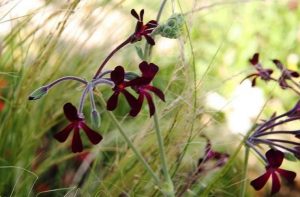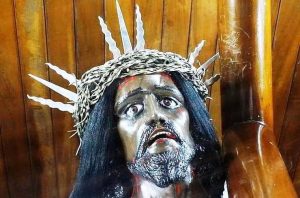Pilgrimage has long been part of the Jubilee experience, and the Jubilee 2025 has the eloquent motto “Pilgrims of Hope”. The Pilgrim’s Way to Santiago de Compostela is one of the most famous in the world. It is visited by thousands of pilgrims every year.
Among the many pilgrimage routes that crisscross the globe, the Camino de Santiago, or the Way of St. James, holds a special place. Winding through the beautiful landscapes of Northern Spain to the revered shrine of the apostle St. James the Great in the cathedral of Santiago de Compostela, the Camino is more than just a path for devout Christians. It has become a meeting ground for people of all faiths, as well as those who don’t adhere to any particular religion. This remarkable diversity raises a fascinating question: What is it about the Camino that draws so many different people to its trails?
For Christians, pilgrimage has always been about more than just reaching a physical destination. It’s a journey that mirrors the inner spiritual journey–a path to come closer to God, to seek forgiveness, or to offer thanks.
This tradition can be traced back to the earliest days of Christianity, with pilgrims travelling to sites associated with the life of Jesus Christ. The Camino de Santiago, established in the 9th century after the discovery of St. James’ tomb, quickly became one of Christendom’s most important pilgrimage routes. During the medieval period, walking the Camino was seen as a way to atone for sins, and the journey itself was imbued with deep spiritual significance.
Walking the Camino is often described by pilgrims as a profound spiritual experience. The journey is punctuated by rituals such as receiving the Compostela – a certificate that recognizes the pilgrim’s effort after completing at least 100 kilometres on foot or 200 kilometres by bicycle. This recognition serves not just as a physical token of the journey but as a symbol of the spiritual renewal that many pilgrims experience along the way.
Interestingly, the Camino de Santiago has a universal appeal that extends far beyond the Christian community. In recent years, there’s been a noticeable increase in the number of pilgrims who come from diverse religious backgrounds, or who don’t identify with any religion at all.
This surge can be partly attributed to a growing desire for personal growth, adventure, and a break from the relentless pace of daily life. The Camino provides a rare opportunity to disconnect from modern distractions and reconnect with oneself on a deeper level.
For many non-religious pilgrims, the Camino is less about a religious journey and more about seeking answers to life’s big questions. It’s a place where people can explore their purpose, reflect on their lives, and find peace in the simplicity of walking.
The historical and cultural richness of the Camino also plays a significant role in attracting these pilgrims. The route is often seen as a living museum, offering a tangible connection to centuries of European history and culture.
The idea of pilgrimage is evolving in today’s world. It’s no longer confined to those seeking religious salvation; it’s also about personal exploration and healing. Many modern pilgrims approach the Camino as a form of meditation, a time to step away from their hectic lives and reconnect with their inner selves.
Walking becomes a kind of therapy, offering a chance to reflect, to heal, and to grow. The act of walking–slow, deliberate, and unhurried–provides a stark contrast to the speed of modern life, allowing for a deeper connection with nature and oneself.
This is where the Camino’s real power lies: in its ability to meet each pilgrim where they are, offering something unique to everyone who walks its paths. Whether it’s the physical challenge, the solitude, or the community of fellow pilgrims, the Camino offers a space for reflection and transformation. It’s a journey where each step becomes a metaphor for the challenges and triumphs of life.
The Camino de Santiago is not just a modern phenomenon; it’s a path steeped in history, stretching back over a thousand years. Its origins are tied to the discovery of St. James’ relics in the early 9th century, which sparked the creation of a sanctuary in his honour.
During the Middle Ages, the Camino became one of the most significant pilgrimage routes in Europe, attracting pilgrims from all over the continent. These medieval pilgrims faced numerous challenges, from the threat of bandits to harsh weather, but these difficulties were often seen as part of the spiritual journey, a test of faith and endurance.
However, the popularity of the Camino waned during the Protestant Reformation and the Enlightenment, periods when pilgrimage was viewed with suspicion or indifference. It wasn’t until the 20th century that the Camino experienced a revival, driven by a renewed interest in spirituality, cultural heritage, and tourism.
One of the remarkable aspects of the Camino is the variety of routes available, each offering a unique experience. Here’s a glimpse into some of the most well-known paths:
Camino Frances (The French Way): The most famous and widely travelled route, the Camino Frances begins in Saint-Jean-Pied-de-Port in France and stretches across approximately 800 kilometres of stunning landscapes, including the Pyrenees, rolling plains, and vibrant Spanish cities like Pamplona, Burgos, and León. This route is beloved not just for its historical significance but also for its accessibility and the strong sense of community among pilgrims.
Camino Portugues (The Portuguese Way): Starting in Lisbon, this route takes pilgrims through some of Portugal’s most beautiful and historic cities, including Porto, before crossing into Spain at Tui. The Camino Portugues offers a mix of coastal and inland scenery and is known for being less crowded than the Camino Frances, making it a great choice for those seeking a quieter journey.
Camino Portugues Coastal Way: This variant of the Portuguese Way follows the stunning Atlantic coastline from Porto, offering pilgrims breathtaking ocean views and the chance to walk along sandy beaches and seaside boardwalks. It’s a route that appeals to those who love the sea and want a relatively flat and scenic journey.
Camino del Norte (The Northern Way): Also known as the Ruta de la Costa, this route traces the northern coast of Spain, beginning in Irun and passing through vibrant cities like San Sebastián and Bilbao. It’s a route favoured by those who enjoy coastal scenery and don’t mind the physical challenge of hilly terrain.
Camino Primitivo (The Original Way): The oldest of the pilgrimage routes, the Camino Primitivo begins in Oviedo and is known for its challenging mountainous terrain. It’s a less-travelled path ideal for those seeking solitude, stunning natural beauty, and a deep sense of connection to the Camino’s ancient roots.
Camino Ingles (The English Way): This route starts in the port towns of Ferrol or A Coruña and was historically used by English, Irish, and Scandinavian pilgrims. It’s a shorter route but rich in history and offers beautiful coastal and rural scenery as it winds its way to Santiago.
The Camino de Santiago is a journey that touches the soul. Whether walking for religious reasons, personal growth, or simply the joy of being outdoors, the Camino has a way of leaving a lasting impression on all who undertake it.
It’s a place where the past and present meet, where different cultures and beliefs intersect, and where each pilgrim’s journey becomes part of a larger tapestry of human experience. In a world that often feels disconnected, the Camino offers a reminder of the power of simplicity, the importance of reflection, and the beauty of walking a path that has been travelled by so many before us. (Marlon Bobier Vargas) – (Photo: Pixabay)







